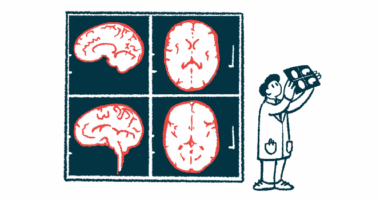The Power of Mindfulness and Meditation for Caregivers
How a meditation practice helps this NMO mom process difficult emotions

Most people can agree that life is one big roller coaster of highs, lows, twists, and turns. This is especially true for anyone living with or caring for a loved one with neuromyelitis optica (NMO).
When my daughter Bella was diagnosed with NMO in 2017, our world was turned upside down. One day Bella was a happy, healthy 9-year-old without a care in the world, and the next, she was admitted to the hospital. The following six weeks were full of many unknowns, and the trauma I experienced still creeps up on me to this day.
In the years since Bella was diagnosed, I’ve tried a variety of things, including talk therapy and medication, to cope with the trauma and stress of NMO. I work hard to keep my mind clear and focused so that I can make the best decisions for Bella and be an example for her.
While talk therapy and medication helped relieve some of my anxiety, I felt they weren’t doing enough. So a little over a year ago, I began practicing mindfulness and meditation.
I’ve found that meditation is to the mind what physical exercise is to the body. Meditation can help calm anxiety and bring your mind into the present moment, which is especially helpful when dealing with a traumatic or stressful situation.
I began practicing meditation during a wellness session at work. We began by finding a comfortable spot to sit and focus on our breathing. Next, we worked on relaxing, being kind to our wandering thoughts, and focusing on the present moment. We did this for 20 minutes, and when we were done I felt as energized and refreshed as I would feel after a two-hour nap. From that moment on, I was hooked.
There are a few ways to begin the practice of meditation. Guided meditations are led by a teacher who helps lead you to a state of relaxation. This can be done either in person or virtually. There are also many books about meditation. My favorite is “The Miracle of Mindfulness: An Introduction to the Practice of Meditation” by Thich Nhat Hanh, who explains how to engage in the practice at any point during the day.
Meditation has provided relief for both Bella and me in ways I never would’ve imagined. The mind can sometimes play tricks and bring back difficult memories, but meditation helps me process them. For Bella, the practice helps keep her calm during dreaded needle pokes when she receives her monthly intravenous immunoglobulin infusions.
Meditation is hope, and according to Hanh, “Hope is important because it can make the present moment less difficult to bear. If we believe that tomorrow will be better, we can bear a hardship today.”
Note: Neuromyelitis News is strictly a news and information website about the disease. It does not provide medical advice, diagnosis, or treatment. This content is not intended to be a substitute for professional medical advice, diagnosis, or treatment. Always seek the advice of your physician or other qualified health providers with any questions you may have regarding a medical condition. Never disregard professional medical advice or delay in seeking it because of something you have read on this website. The opinions expressed in this column are not those of Neuromyelitis News or its parent company, Bionews, and are intended to spark discussion about issues pertaining to neuromyelitis optica spectrum disorder (NMOSD).







Leave a comment
Fill in the required fields to post. Your email address will not be published.